Add Diode Laser Hair Removal to Your MedSpa: Evaluating the Benefits and Drawbacks
Understanding Diode Laser Hair Removal
Diode laser technology offers a modern approach to hair removal, utilizing specific wavelengths to target melanin in the hair follicles for effective reduction.
What Is Diode Laser Technology?
Diode laser hair removal employs semiconductor technology that produces coherent projection of light in the visible to infrared range. It uses a particular wavelength of light, typically 810 nm, which is optimally absorbed by the melanin pigment in the hair follicle without significantly affecting the surrounding skin.
Key Aspects:
- Type of Laser: Semiconductor diode
- Wavelength: Approximately 810 nm
- Target: Melanin in hair follicles
- Usage: Hair removal on a variety of skin types
The Science Behind Hair Reduction
The primary goal of diode laser hair removal is to achieve permanent hair reduction. Energy from the laser is absorbed by the melanin present in the hair, which is then converted to heat. This heat damages the hair follicle to hinder future hair growth.
- Energy Absorption: Hair pigment (melanin) absorbs the laser energy.
- Heat Conversion: Energy transforms into heat, damaging the hair follicle.
- Result: Reduced ability of the follicle to produce new hair, potentially leading to permanent hair reduction over multiple treatments.
Benefits of Adding Diode Laser Services

Introducing diode laser hair removal services to a medspa unlocks new opportunities for growth and client satisfaction. This advanced cosmetic procedure is recognized for its efficiency and ability to cater to various skin types.
Appealing to a Diverse Clientele
Diode laser hair removal stands out for its inclusivity, making it a versatile addition to any medspa.
- Skin Compatibility: Diode lasers are effective for a wide range of skin types, including darker complexions, where some other lasers may not be safe or effective.
- Hair Reduction Quality: Clients commonly seek permanent hair reduction solutions. Diode lasers provide long-lasting results, diminishing the need for frequent return appointments for the same area.
- Treatment Versatility: Capable of treating various body parts, diode lasers can address hair removal needs from facial regions to larger areas like the back or legs.
Enhancing Medspa Revenue Streams
Incorporating diode laser treatments can have a substantial impact on a medspa's profitability and operational efficiency.
-
Increased Sessions: Most hair removal protocols with diode lasers require multiple sessions, generating repeated visits and a steady income.
Number of Sessions Expected Revenue Increase 4-6 per area Moderate to Significant -
High Efficiency: Diode lasers typically offer shorter treatment times compared to other hair removal methods, allowing for more appointments in a day.
-
Long-lasting Results: Clients often prefer a higher upfront cost for a procedure that provides long-term outcomes, such as the semi-permanent results achieved with diode laser hair removal.
-
Minimal Recovery: As there is minimal to no downtime associated with diode laser treatments, clients are more likely to schedule these procedures knowing their daily routines will not be significantly disrupted.
Evaluating Consumer Demand and Safety
Before incorporating diode laser hair removal machine into a medspa's service list, it's crucial to assess both its safety profile and the existing consumer interest. These factors contribute to the viability and success of offering this cosmetic procedure.
Safety Profile of Diode Laser Treatments
Diode laser hair removal is widely recognized as a safe option for eliminating unwanted hair across various skin types and tones. This technology operates at a wavelength that targets the melanin in the hair follicle while minimizing damage to the surrounding skin. The American Society of Plastic Surgeons considers laser hair removal a safe procedure when performed by a qualified practitioner. However, the safety can vary depending on the individual's skin type, with some skin tones experiencing minor side effects.
- Common Side Effects:
- Skin irritation
- Pigment changes
- Less Common Side Effects:
- Blistering
- Scarring
Consumer Interest and Market Trends
There is a significant market for laser hair removal, as individuals seek effective solutions for unwanted hair. The demand for non-invasive cosmetic procedures has been increasing, reflecting a broader trend toward personal grooming and aesthetics. Market analysis indicates that the popularity of laser hair removal is sustaining, with growth driven by advancements in technology that make treatments quicker and more comfortable. Medspas need to evaluate current trends and demographic needs to capitalize on this growing market.
- Key Factors Influencing Market Trends:
- Effectiveness of treatment
- Growing awareness of laser technologies
- Availability of treatments for a wide range of skin tones
Potential Risks and Side Effects
While diode laser hair removal is recognized as a safe procedure, clients may experience some side effects. It's paramount to understand these effects and how they might be managed effectively.
Common Side Effects and How to Mitigate Them
-
Discomfort: Clients often report sensations similar to the snap of a rubber band during the procedure. Using a cooling gel or a numbing cream prior to treatment can reduce discomfort.
-
Redness and swelling: These are normal reactions post-treatment, resembling mild sunburn. Applying ice packs or cooling gels helps in soothing the affected area.
-
Skin discoloration: There can be temporary hyperpigmentation or hypopigmentation. Clients should be advised to avoid sun exposure and use sunscreen to minimize these risks.
To help mitigate these side effects, professionals should provide proper aftercare instructions and recommend over-the-counter remedies if appropriate.
Understanding Rare but Serious Complications
Although uncommon, serious complications can arise and should be communicated to clients.
-
Burns and blisters: In rare cases, clients might experience burns or blisters if the laser is improperly used. Proper technician training and adherence to safety protocols are critical to avoid such outcomes.
-
Scarring: Very rarely, scarring can occur, particularly if post-treatment care recommendations are disregarded. Ensuring that clients follow all aftercare instructions can reduce this risk.
-
Infection: Though it's uncommon, any skin treatment can result in infection. Maintaining a clean environment and using sterile equipment are vital to prevent this complication.
It is essential for medspa professionals to assess skin type and hair color to minimize the risk of serious complications and to tailor the treatment protocol accordingly.
Operational Considerations for Medspas
When incorporating diode laser hair removal into a medspa, there are significant operational considerations that must be addressed to ensure both compliance and optimal service delivery. Two primary areas of focus are the qualifications and training of the staff who will operate the laser equipment and the financial implications of acquiring and maintaining this technology.
Staff Training and Qualification Requirements
Technician Training: Technicians need comprehensive training on diode laser systems, covering operation, safety protocols, and patient care. The training programs should be recognized by relevant authorities and should preferably have FDA approval to confirm they meet national standards.
- Proper Certification: Staff must be certified as laser technicians, which often requires attending accredited courses and passing certification exams.
Professional Oversight: A plastic surgeon or a similarly qualified professional should oversee the procedures to maintain standards and handle any complications.
- Plastic Surgeon Involvement: Presence of a plastic surgeon ensures adherence to medical protocols and enhances treatment credibility.
Equipment Investment and Maintenance
Cost of Equipment: The cost of purchasing a diode laser hair removal system ranges considerably. Medspas need to budget for the initial investment and consider financing options if necessary.
- Initial Investment: High-quality, FDA-approved diode laser systems can be a significant upfront cost.
Ongoing Maintenance: Maintaining the equipment is crucial for efficient operation and safety. Maintenance incurs additional costs but is essential to deliver consistent results.
- Regular Servicing: Scheduled maintenance ensures the equipment operates efficiently and extends its lifespan.
- Repair Costs: Setting aside a fund for potential repairs helps in avoiding disruption of services.
By addressing these operational considerations thoroughly, medspas can confidently integrate diode laser hair removal into their offerings, keeping in mind that excellence in service depends on qualified professionals and a commitment to investment in both equipment and continuous staff development.
Marketing and Client Education Strategies
Integrating diode laser hair removal into a medspa offering necessitates a strategic approach to marketing and client education. These efforts will focus on promoting the services effectively and informing clients about the procedure and aftercare.
Promoting Laser Hair Removal Services Effectively
Target Audience Identification: Understand the demographic most likely to seek laser hair removal. Utilize data analysis tools to segment the market and target your advertising accordingly.
Service Highlighting and Branding: Clarify how the diode laser stands out among hair removal options. Emphasize benefits such as precision, speed, and the potential for long-term hair reduction.
Multi-Channel Advertising:
- Online Platforms: Use social media, paid search ads, and SEO strategies to tap into a digitally-savvy audience looking for cosmetic procedures.
- Traditional Media: Consider local magazines, radio, and community boards for an extensive reach within the U.S. market.
Special Offers and Memberships: Attract new clients with introductory specials, packaged session deals, and membership programs that encourage recurring appointments.
Partnerships and Referrals: Collaborate with other local businesses and health professionals to cross-promote services, leveraging the trust and clientele of established entities.
Educating Clients on Procedure and Aftercare
Pre-Procedure Consultation: Mandate a consultation for each client to discuss diode laser specifics, including the number of sessions required—based on hair growth patterns and individual goals.
| Topic | Details |
|---|---|
| Procedure Explanation | Describe how the diode laser targets hair follicles and the expected sensations during treatment. |
| Session Timeline | Outline the typical course of treatment, noting that multiple sessions are usually needed. |
| Expected Results | Provide realistic expectations, underscoring the pros and cons of this cosmetic procedure. |
Aftercare Guidelines:
- Distribute printed or digital aftercare instructions.
- Stress the importance of sun avoidance and use of sunscreen post-treatment.
- Offer a follow-up support system to answer any post-treatment questions and concerns.
By employing clear marketing and educational strategies, medspas can assure clients are well-informed and comfortable with diode laser hair removal services.



































